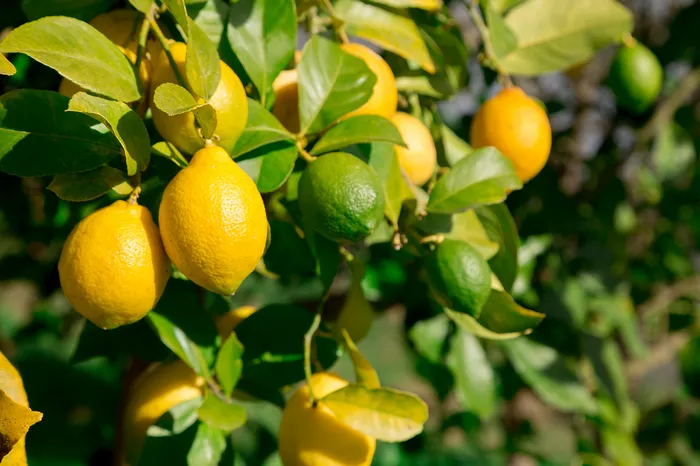Lemon trees, with their vibrant green foliage and zesty fruit, are prized additions to any garden or orchard. However, when these beloved trees fail to produce the delicate blossoms that precede the fruit, frustration can set in for even the most seasoned gardeners. Understanding the reasons behind a lemon tree’s reluctance to flower is crucial in addressing the issue and fostering healthy growth. In this comprehensive guide, we will delve into the intricacies of lemon tree care, exploring common causes for non-flowering and offering practical solutions to help your lemon tree flourish.
The Role of Environmental Factors
Before delving into potential problems with your lemon tree, it’s essential to consider the environmental conditions in which it is situated. Lemon trees thrive in specific climates and require adequate sunlight, water, and nutrients to bloom and bear fruit. Insufficient sunlight can inhibit flowering, as lemon trees typically require full sun exposure for optimal growth. Ensure that your lemon tree receives at least six to eight hours of direct sunlight daily.
Similarly, improper watering practices can hinder flowering. Overwatering can lead to root rot and nutrient leaching, while underwatering can stress the tree and impede its ability to produce blossoms. Aim for consistent soil moisture, allowing the top inch of soil to dry out between waterings. Additionally, ensure proper drainage to prevent waterlogging, which can suffocate the roots and compromise the tree’s health.
Nutritional Deficiencies: Addressing the Root Cause
Nutrient deficiencies are a common culprit behind non-flowering lemon trees. These citrus plants have specific nutritional requirements, and deficiencies in essential nutrients can disrupt their reproductive cycle. Nitrogen, phosphorus, potassium, and magnesium are particularly vital for lemon tree health and flowering.
Nitrogen promotes lush foliage growth but can inhibit flowering if present in excess. Phosphorus plays a crucial role in flower and fruit development, making it essential for encouraging blooms. Potassium aids in overall plant health and resilience, while magnesium is necessary for chlorophyll production and photosynthesis.
Conduct a soil test to assess the nutrient levels in your lemon tree’s growing medium. Based on the results, amend the soil with a balanced fertilizer formulated for citrus trees. Select a fertilizer with a higher phosphorus content to encourage flowering, and follow the application instructions carefully to avoid overfertilization.
Pruning Practices: Striking the Right Balance
Proper pruning is another factor to consider when troubleshooting a non-flowering lemon tree. While pruning is essential for maintaining the tree’s shape, excessive pruning can remove potential flowering sites and delay bloom formation. Lemon trees produce flowers on the previous year’s growth, so pruning should be done judiciously to preserve flowering wood.
Focus on removing dead, diseased, or overcrowded branches to improve air circulation and sunlight penetration within the canopy. Avoid heavy pruning during the flowering season, as this can disrupt the tree’s reproductive cycle and diminish fruit production. Instead, schedule pruning sessions during the tree’s dormant period in late winter or early spring to stimulate new growth and flowering.
Pest and Disease Management
Pests and diseases can also sabotage a lemon tree’s flowering potential if left unchecked. Common pests that target citrus trees include aphids, scale insects, and citrus leafminers, all of which can damage foliage and stress the tree. Additionally, fungal diseases such as citrus canker and root rot can compromise the tree’s overall health and inhibit flowering.
Implement integrated pest management strategies to mitigate pest infestations, including regular inspections, cultural controls, and targeted pesticide applications when necessary. Practice good sanitation by promptly removing fallen leaves and fruit to reduce pest habitat and disease transmission. Furthermore, ensure proper irrigation practices to minimize water-related diseases such as root rot.
Consideration of Tree Age and Variety
It’s essential to recognize that lemon trees, like many fruit-bearing plants, may take several years to reach maturity and begin consistent fruiting. Young trees often focus on establishing a robust root system and vegetative growth before allocating resources to flower and fruit production. Be patient and provide proper care and maintenance to support your lemon tree’s development over time.
Additionally, the choice of lemon tree variety can influence flowering behavior and fruit production. Some varieties, such as Meyer lemon trees, are known for their prolific flowering and fruiting habits, while others may exhibit variability in bloom intensity. Research the characteristics of your lemon tree variety to gain insight into its typical flowering patterns and requirements.
Conclusion
In conclusion, a non-flowering lemon tree can be a source of frustration for gardeners, but with careful attention to environmental factors, nutritional needs, pruning practices, pest management, and tree age, you can address the underlying issues and encourage abundant blooms and fruiting. Remember to provide adequate sunlight, water, and nutrients, and maintain a balanced pruning regimen to support your lemon tree’s health and vitality. By implementing these strategies and staying vigilant against potential threats, you can enjoy the beauty and bounty of a flourishing lemon tree in your garden for years to come.


